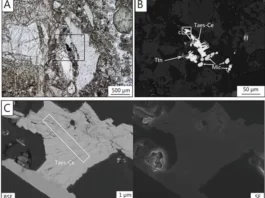From “Revitalise China” to “four modernisations” following the formation of the People’s Republic of China in 1949, referring to agriculture, industry, defence, and science, China has ceaselessly sought modernisation for more than a century.
In 2022, China’s leadership published its blueprint for constructing a new socialist China with a distinctive Chinese path in all respects.
In his New Year’s address on Saturday, Chinese President Xi Jinping stated that an ambitious blueprint had been created for building a modern socialist country in all aspects and advancing the great rejuvenation of the country on all fronts through a ‘Chinese path’ to modernisation.
In the direction of Chinese modernity
A report that was presented to the National Congress of the Communist Party of China for the very first time in October 2022 included the term “Chinese modernisation,” which is a vital concept that outlines China’s journey to rejuvenation (CPC).
Chinese modernisation is comprised of aspects that are universal to all modernisation processes, as well as characteristics that are exclusive to the Chinese setting.
The President of China, Xi Jinping, has highlighted the distinctive characteristics of modernisation in China. These characteristics include the modernisation of a massive population, universal prosperity, material and cultural-ethical advancement, harmony between humanity and nature, and peaceful growth.
China is attempting to modernise more than 1,4 billion people, which is greater than the total population of all developed nations in the world today.
As its economy continues to expand at a steady rate, China has stated that it is working to minimise inequality and promote the concept of “shared prosperity” as a means to ensure that everyone benefits from an equitable part of the country’s economic success. China’s index of common prosperity, according to the Blue Book of Common Prosperity, rose by 79.3 percent over the course of five years, increasing from 24.67 in 2013 to 44.23 in 2020.
China strives to establish an advanced socialist culture, promote strong principles and convictions, and perpetuate China’s cultural heritage while continuing to consolidate the material foundation for modernisation and enhance material conditions for the well-being of its people. China currently has 43 items on the UNESCO list of Intangible Cultural Heritage, the most in the world.
China remained a dominant engine of global economic expansion in 2022, guided by a new development ideology emphasising innovative, coordinated, environmentally friendly, open, and shared development. The International Monetary Fund predicted that China’s GDP would expand by 3.2% in 2022, in line with the projected world growth rate.
As the Chinese leadership has often declared, the nation has maintained its commitment to peaceful development. The April launch of the Global Security Initiative is one example. It has already received praise and support from more than 70 nations.
With sturdy strides
The CPC wants to realise socialist modernisation from 2020 to 2035 and to build China into a prosperous, strong, democratic, culturally advanced, harmonious, and beautiful big modern socialist country from 2035 to the middle of this century.
Already, the path to attaining the objectives is taking form. The country’s education, social security, and healthcare systems are the largest in the world due to its people-centred development ideology.
Xi emphasised that innovation is the most important factor in China’s quest to become more modern. It is clear that China is working hard to achieve scientific innovation autonomy, as evidenced by its many accomplishments, including the Beidou Navigation Satellite System, space research that includes lunar and Mars probes as well as the construction of China’s very own space station, and the Fendouzhe deep-sea manned submersible. Additionally, the government has developed its very own technology in the areas of high-speed rail, fifth-generation communications, and artificial intelligence.
China’s ranking among the 132 economies examined in the World Intellectual Property Organization’s (WIPO) Global Innovation Index 2022 has increased to the eleventh.
China’s modernisation programme also emphasises harmonious cohabitation between mankind and nature, guided by Xi’s idea that “clear waterways and verdant mountains are priceless assets.” Over the previous decade, the country has reduced the intensity of its carbon emissions by 34,4 percent, and it has promised to reach carbon neutrality before 2060.
In addition, China reiterates that it will support a bigger agenda of opening up in more areas and with greater depth, following the Chinese route to modernisation, and sharing the development opportunities that the country possesses with the rest of the world. According to the General Administration of Customs, China’s commerce in products increased 8.6 percent year over year to 38.34 trillion yuan ($5.5 trillion) in the first 11 months of 2022.






